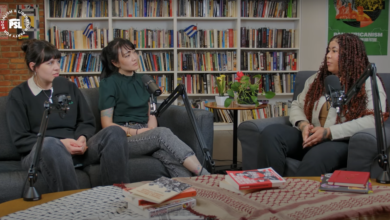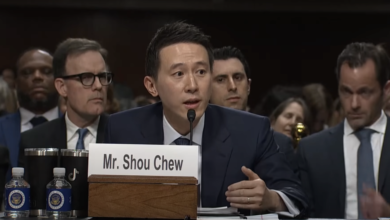With its confrontational posturing and bellicose language towards a host of other countries—especially Iran, Syria, North Korea, Cuba and Venezuela—the Bush administration seems hell-bent on further war.
Surely this cannot be the case, with the United States confronting massive resistance in Iraq, in Lebanon and,
|
Not necessarily. As war secretary Donald Rumsfeld is fond of a saying: “If a problem cannot be solved, enlarge it.” The theory is not new to U.S. military strategy. It was first voiced by former president Dwight D. Eisenhower in the 1950s.
How has this imperialist theory worked, in practice?
The Vietnam War
Even its name, the Vietnam War, contains a kind of criminal omission: The war was against three countries—Vietnam, Cambodia and Laos. In all three countries, the U.S. military waged sustained war for years upon end with indiscriminate savagery.
Vietnam was an intractable problem for the imperialists. Cambodia and Laos were examples of how the imperialists enlarged the problem.
In systematic fashion, the United States bombed south Vietnam, north Vietnam, Laos and Cambodia. American planes dropped over eight million tons of explosives. This explosive force is equivalent to 640 Hiroshima bombings and is over four times the tonnage of all bombs dropped by all sides in World War II.
The U.S. imperialists finally gave up in Vietnam, defeated, after 25 years of colonial, then imperial war. The imperialists would occupy half the country, and the other half they bombed. Washington tried everything—coups, napalm, death squads, and so on.
Unable to crush the National Liberation Movement in south Vietnam or their allies in the socialist half of the country, the Pentagon reverted to “carpet bombing”—meant to systematically destroy targeted regions. By the war’s end, as many as two million Vietnamese people had been killed.
In the end, however, none of the imperialists’ strategies or tactics worked. The Vietnamese wanted the U.S. occupiers out of their country. The United States lost the war, plain and simple.
Targeting Laos
When things started to go badly in Vietnam, nearby Cambodia and Laos became targets.
The U.S. government enlarged the Vietnam War into Laos for two principal reasons: to put down the Pathet Lao insurgency, which was waging an intensifying war against a U.S.-installed, right-wing dictatorship in Laos; and to stop the flow of goods on the so-called Ho Chi Minh trail, used to bring supplies from north Vietnam to the south, passing partly through Laos.
By 1965, the U.S. military had failed to defeat the Laotian insurgency through police state means. So it turned to bombing the countryside.
Because the Pathet Lao was a popular movement, bombing them meant bombing the people. American bombers targeted village society and its civilian infrastructures.
According to George Chapelier, a United Nations official who witnessed the peak of the bombing in 1969: “Nothing was left standing. The villagers lived in trenches and holes or in caves. They only farmed at night. All of the informants [I talked to], without any exception, had their villages completely destroyed. In the last phase, bombing was aimed at the systematic destruction of the material basis of the civilian society. Harvests burned down and rice became scarce.”
Between 1965 and 1973, the United Stated dropped more than two million tons of bombs on Laos, more than it had dropped on Germany and Japan in World War II. The country was decimated. Hundreds of thousands of people had been killed.
And what did the U.S. undersecretary of state have to say? “[The Laos operation] is something of which we can be proud as Americans. It has involved nearly no American casualties.”
Bombing Cambodia
In Cambodia, King Sihanouk worked hard to maintain “neutrality” during the war. He went so far as to give the United States the right to bomb his own country, targeting the Khmer Rouge in their rural base of power.
But it was not enough for the imperialists.
The war was going badly and the U.S. government had to blame someone. In 1970, Sihanouk was overthrown by Lon
|
Because the Khmer Rouge refused to sign to the Paris Peace Agreement between the United States and Vietnam in January 1973, the bombing was intensified. In most areas of Cambodia, the U.S.-backed government had neither an army nor even spotters. The U.S. military thus turned to indiscriminate bombing of the countryside.
Using B-52s in wave after wave, the United States bombed Cambodia for six solid months. Several hundred thousand people died during the bombing. No country before and no country since has been subjected to the scale and intensity of the U.S. military’s bombing of Cambodia in 1973.
Imperialists defeated
In the 1960s and 1970s, Rumsfeld’s theory about enlarging problems was tested in the U.S. war against Southeast Asia. How did his theory work in practice?
The defeat was absolute. Not only did the U.S. imperialists murder millions of people, it was also defeated militarily in all three countries. A divided Vietnam was finally unified under communist leadership. In Cambodia, the Khmer Rouge came to power. The Pathet Lao eventually won in Laos.
The U.S. government’s strategy failed. It produced precisely the opposite of its intended effects.







